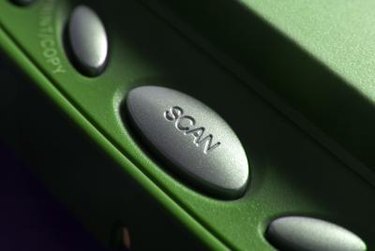
An input device is a peripheral—a piece of computer hardware equipment—providing data and control signals to an information processing system. Input devices include scanners, digital and video cameras, keyboards, a mouse, and pointing and reading devices. Input devices serve a purpose but also come with a few disadvantages.
Digital Cameras
Video of the Day

Digital cameras are wonderful tools. They capture a moment and save time by recording footage that doesn't need to be processed. Images are easily transferred from the camera to the computer or another storage device. Imaging software used with digital photos can also introduce a variety of special effects. A downside is that memory space can be easily used up. You may need to purchase memory cards or additional memory space to replace memory used up by your photos.
Video of the Day
Scanners

A scanner uses a lighting system to capture images and documents. Scanners can capture clear and concise images, with better defined pixels than a digital camera. On the other hand, scanners also use a huge amount of memory space. And though scanners capture a detailed image, it is not always at the right angle or position, which in turn calls for more review and editing.
Keyboard

Keyboards are the most effective way to enter information on the computer screen. Since a keyboard inputs information based on an individual binary code, it efficiently inputs words and numbers. A keyboard is generally part of a computer purchase, whether in desktop or laptop form. Keyboards can be ergonomically unsafe, however, and can cause carpal tunnel syndrome.
Mouse

The mouse is an input device that allows the user to pinpoint and input items with a cursor. The right and left buttons also allow the user to click and select items on the computer screen. A more high-tech mouse can be maneuvered without the ball and has a sensor laser to detect motion. A disadvantage of the mouse is that the repeated back and forth motion over time also may cause carpal tunnel syndrome.